In front of broken things
・・・・・・・・・・
Hello everyone, how are you? This is Tanaka from GRIDFRAME.
<“Gaudi, have you seen this?”>
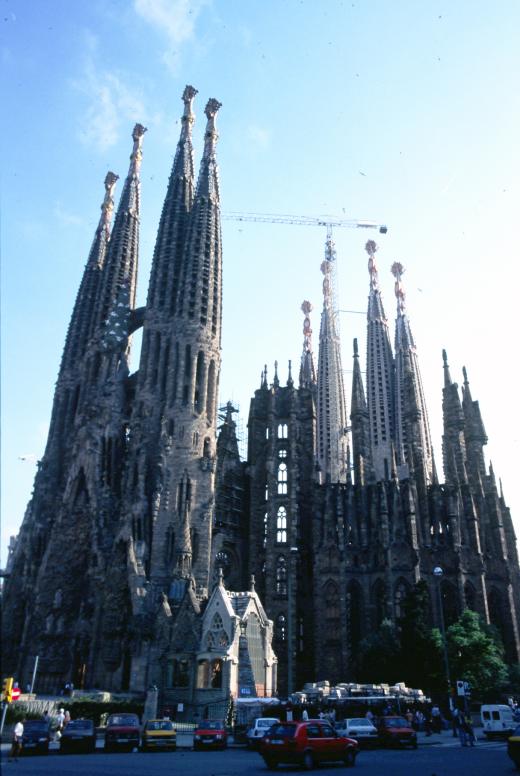
Gaudi’s Sagrada Familia is scheduled to be completed in 2026 after 140 years of construction.
I believe it’s best for the space I create to remain incomplete and change along with the people who use it, so I don’t feel like it’s finally here.
If the value of this building lies in the fact that it is still being constructed almost a century after Gaudi’s death and that it continues to inspire humanity, then I think that what is necessary for humanity is for it to declare that it will never end, and for all buildings in the world to imitate it.
I don’t know much about it, but I guess Gaudi’s concept was finished.
Along the way, various artists created sculptures, and I think one of the wonderful things about this building is that you can enjoy the atmosphere of each era.
I believe that the souls of many people across the ages support this architecture.
Now, this happened after I took the photo above in Barcelona, Spain.
On a trip to central Spain, I discovered a miniature Sagrada Familia.
It is often said that Gaudi got his ideas from plants…Mr. Gaudi, have you seen this?
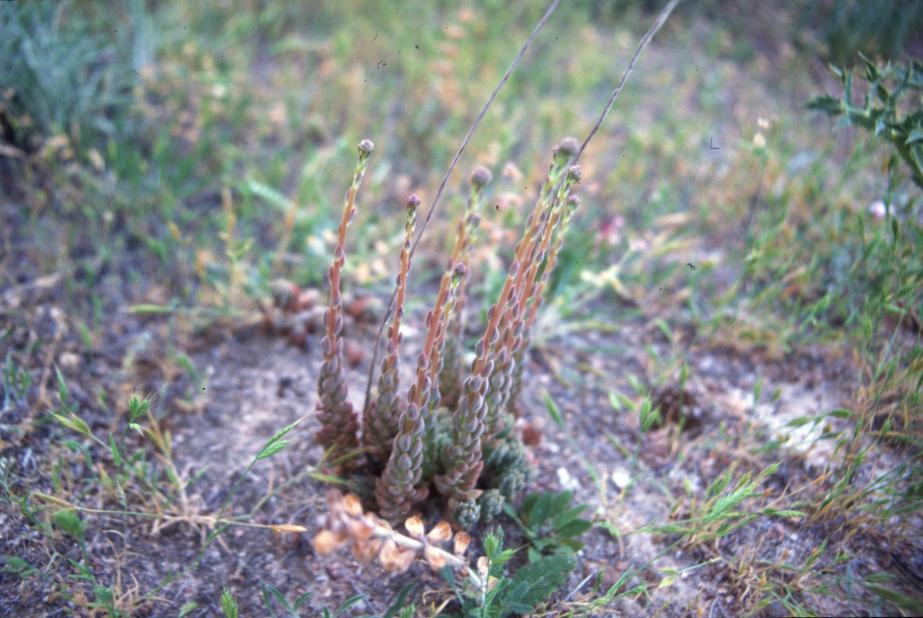
<In front of the broken things>
I stood there speechless in front of the pile of fallen objects.
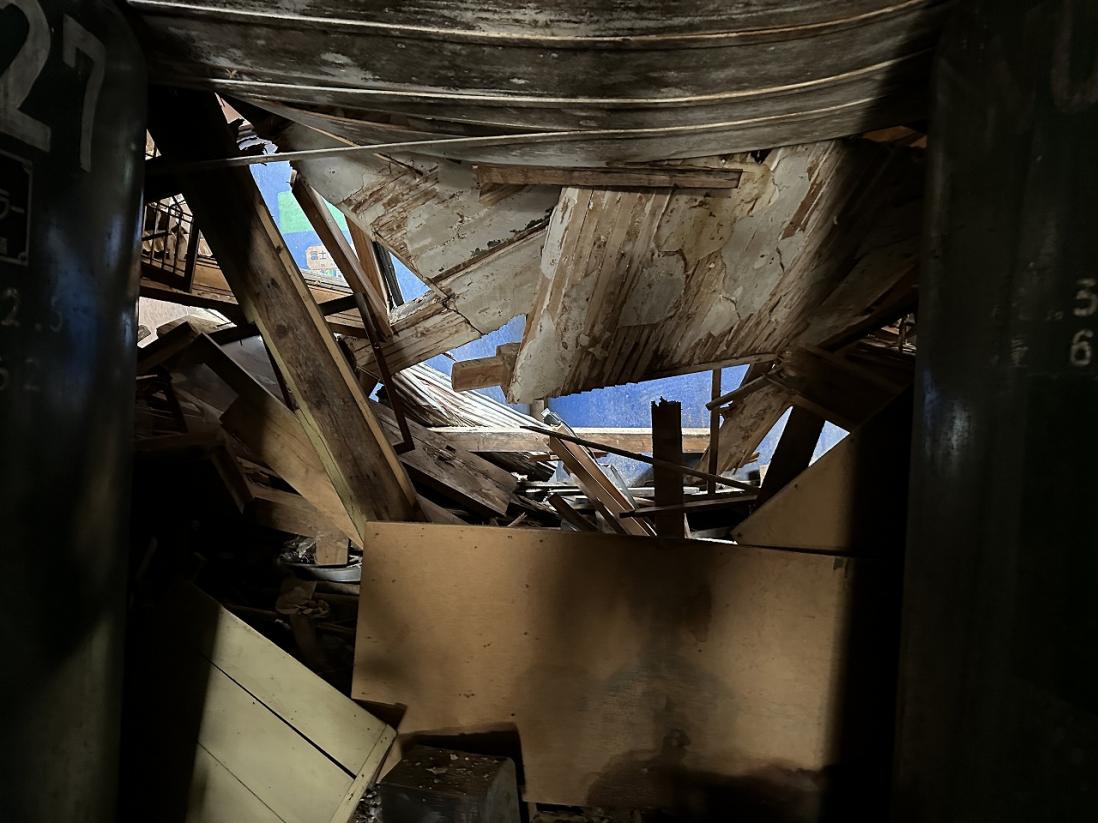
Last spring, I had the opportunity to enter a building in Oku-Noto to extract SOTOCHIKU materials.
I was so shocked that I didn’t move for a while. Was it because I couldn’t move? Or was it because I didn’t want to move?
It’s a one-time thing. Those words came to my mind. No matter what I do, it will never go back to the way it was.
It was an old building in a faraway town that I was visiting for the first time, but I felt as if each of the “broken things” was speaking to me.
The memories of the days spent there come flooding back to me.
Now that I think about it, maybe I didn’t want to move from there.
I have always wanted to create spaces that have a soul. But is there any other space where the soul can speak to you more than this?
What is the essence of this space? And how can we create a beautiful space that can be used for the future? I will try to write about these things to the extent that I can now.
<Taking over the soul of something broken>
In vol.8, we raised the question of whether creating a place without a soul would mean losing festivals, and therefore losing the culture that permeates the local community, people and things every year.
So, what kind of things do we want to create in Noto as a place where souls reside? I have created some images, which I would like to introduce to you.
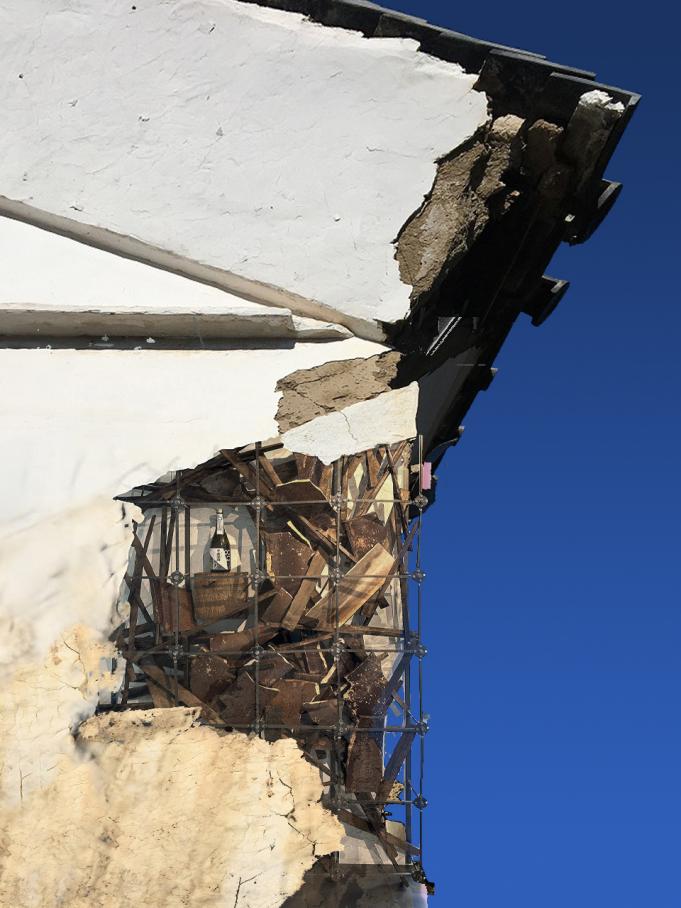
For example, I want to fill in the gaps in the broken walls with broken things like this.
A new structure is incorporated into a part of a building that has stood the test of time. And the new structure encases the broken pieces.
If it is a sake brewery, displaying some sake in one area will convey the passion that has gone into sake brewing.
I would like to see things like this scattered around the town devastated by the earthquake.
I hope that this beautiful piece will be able to convey memories of time spent here to those who have come from far away.
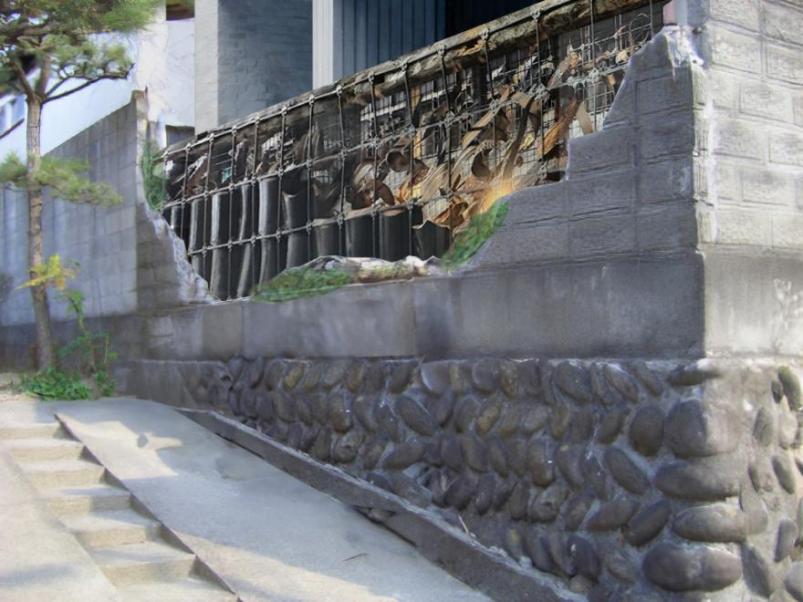
This is an example of how a collapsed wall has been replaced with a new structure to fill in the missing parts.
New structures encase the broken pieces.
Even if the houses are rebuilt, by preserving the objects that serve as a memory of time on the streets, the town can continue to be one worthy of festivals.
We call the activity of preserving broken objects in their original state for the future “creative conservation,” including the “sitable object” featured in Vol. 11, which was made by leaving parts of piled-up broken objects in their original state, and we hope to protect the soul that resides in the town’s landscape.
In Noto, the deadline for applying for public demolition is approaching, and people who were undecided about whether to restore or demolish are now applying for demolition one after another. There are people who are trying to stop the demolition of traditional buildings one after another and lead them to restoration and utilization.
It is clear that the first step is to prevent demolition and resolve structural and functional issues in order to restore the building, but we hope to be able to assist in creative restoration by combining broken parts with traditional architecture.
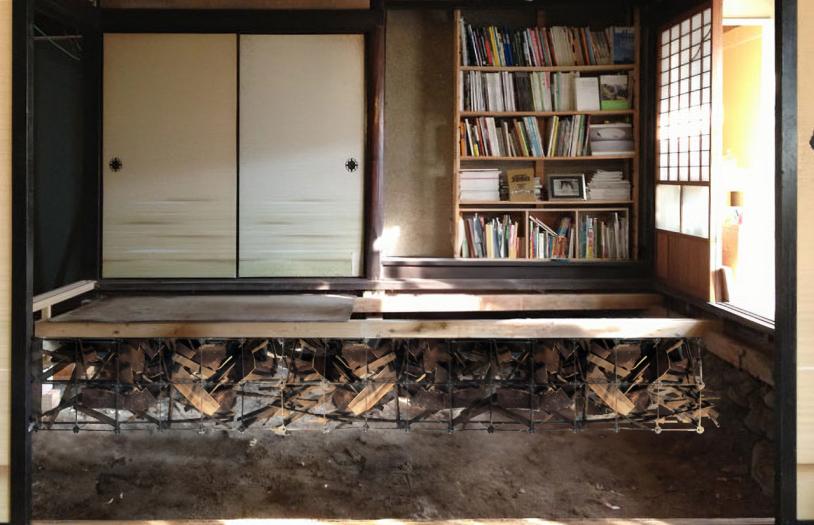
This image shows the broken pieces wrapped around the floor elevation below. With light coming from behind, the broken pieces should be silhouetted.
I would like to use broken objects in a subtle way that blends into the space.
<Wrapping up broken things>
There are times when I want to create a shape with GRIDFRAME and stuff broken things into it, and times when I want to wrap broken things in a soft net. Each time, the sense of distance from the broken thing is different.
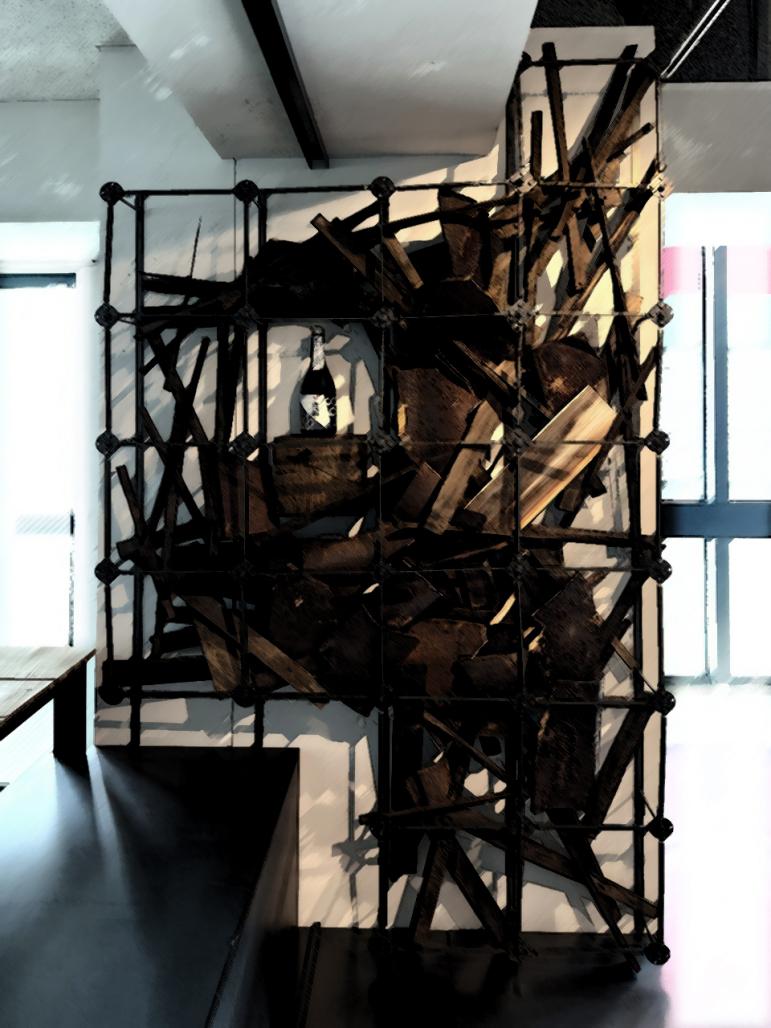
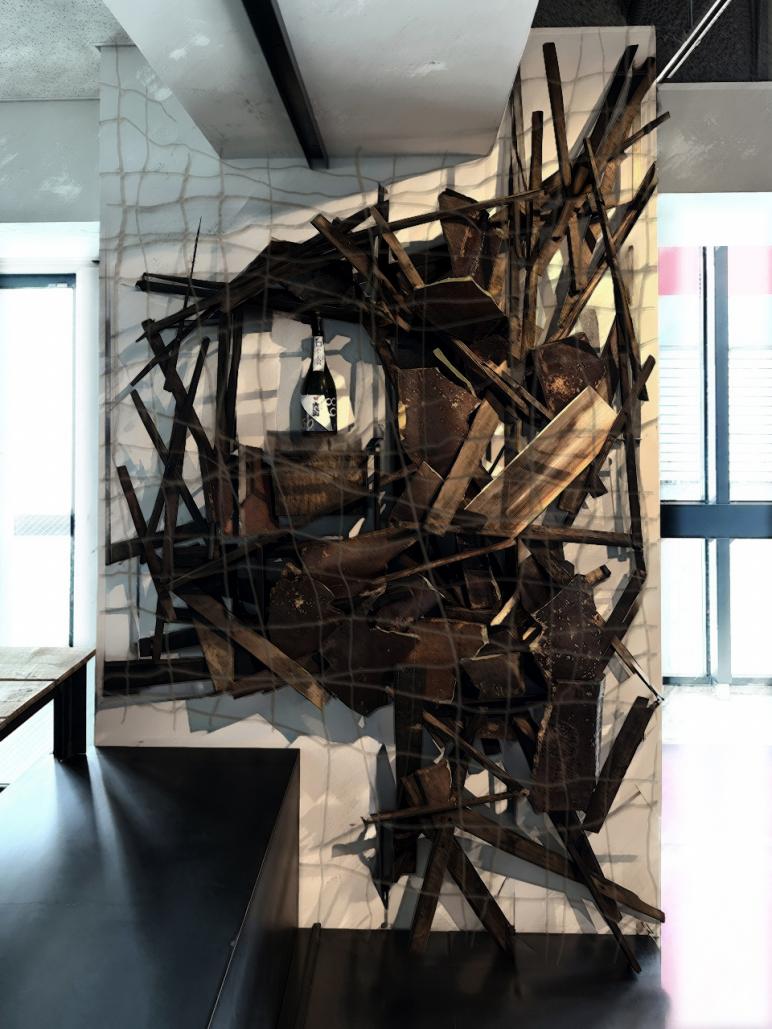
We are currently developing an original GRIDFRAME net. By providing the net, we expect to be able to significantly increase the variety of materials that can be used.
<Broken things and unbroken things>
Apart from us, there are people working to salvage usable building materials, fixtures, and furniture from damaged houses in Noto. Their efforts are on a much larger scale than ours, and I think they are able to prevent a lot of things from being thrown away. It’s a wonderful initiative.
They have something in common with us in that they are trying to preserve the memories of time for the future, but at the same time, there are some clear differences between their activities and ours.
The difference is that they try to collect “unbroken things” from destroyed buildings, while we try to collect “broken things” from destroyed buildings.
The purpose of collecting “unbroken items” is recycling. In other words, they are collected as items with commercial value, and are either creatively processed and commercialized as added-value materials, or sold as building materials as they are.
On the other hand, at SOTOCHIKU, we collect things that would otherwise be thrown away. We believe that there is an unshakable charm to be found in discarded items, which is not bound by the meaning that was originally given to them, and which can be called the freedom of discarded items. Above all, we are mindful of not letting that charm be lost. Therefore, the materials are donated for the creation of spaces, are used only for the creation of our spaces, and are never distributed as products.
When collecting materials for SOTOCHIKU from the disaster site, we donated and collected “broken things” that would have been thrown away otherwise, in order to create a space. It was undoubtedly the “broken things” that exuded something that could be called a soul that spoke to me in the overwhelming space at the site.
・・・・・・・・・・

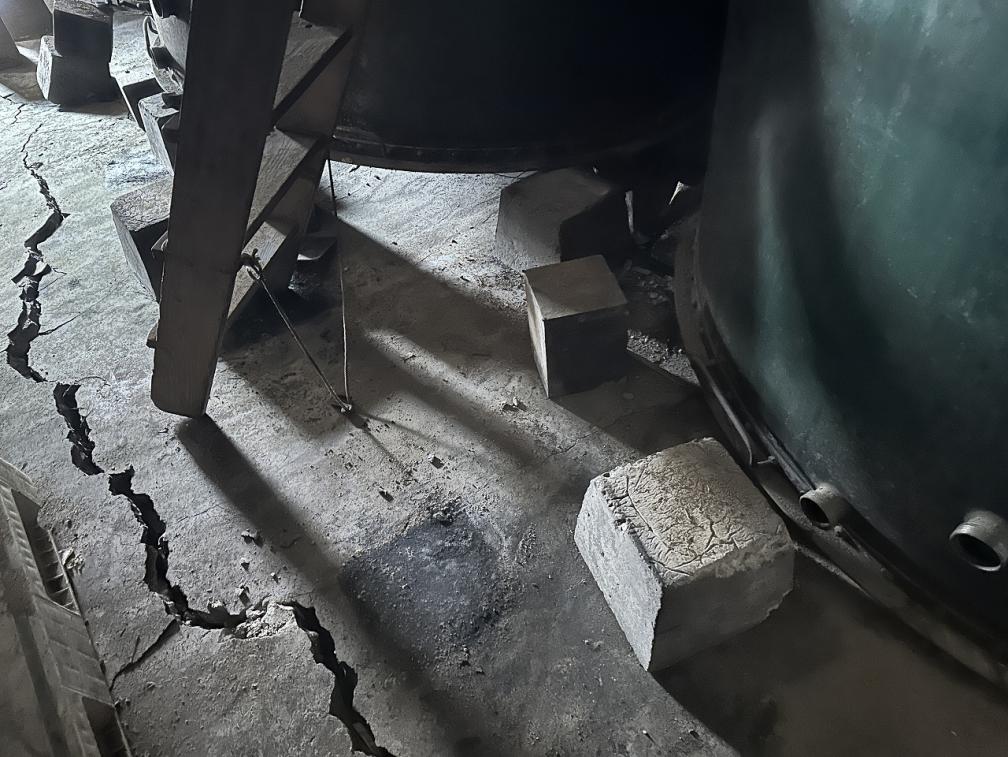
I believe that broken things have the power to create something new .
The uniqueness of things, that they can never be restored, inspires the life that stands there, and pushes it forcefully into the future .
And if this earthquake had not occurred, it would have sent out a powerful message that I would never have been able to feel, and this history would never have been conveyed to an outsider like me.
<Uniqueness and “ruthlessness”>
Last year, at the Abare Festival in Ushitsu, Noto, which the townspeople affected by the disaster decided to hold, I witnessed their enthusiasm as they used all their strength to destroy the mikoshi (portable shrine). This gave me a firsthand sense that festivals are a way of bringing together wisdom to overcome hardship.
Just before the mikoshi started to move, there was a ceremony to select the young men who would carry it, and 20 to 30 strong men lined up in a row, and one by one they bowed before the young leader, shouting “Please.” However, three of them were not allowed to carry it, and they lined up again at the back, desperately pleading again and again, but in the end they were pushed out of the place.
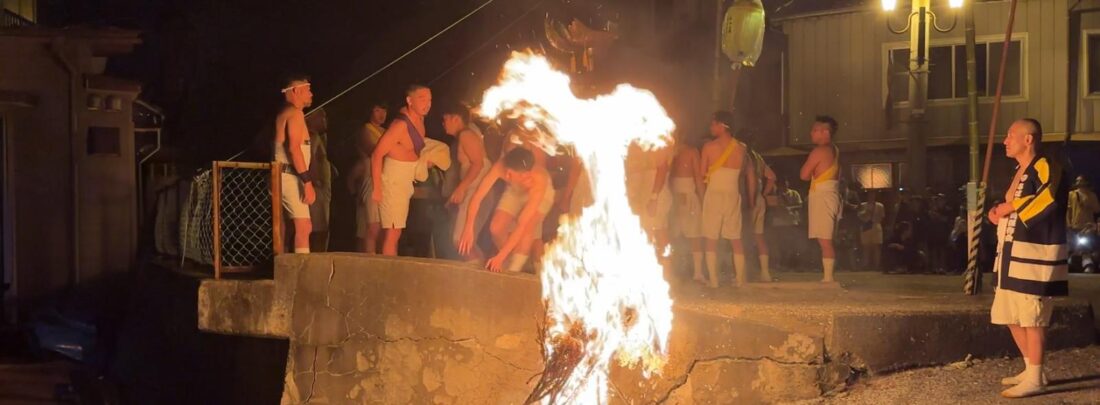
At that moment, an old man from the town, who had been watching the scene from a little distance in front of me, spat out in a low voice, “What can’t be, can’t be.” Those words echoed in my ears, once again reminding me of the “uniqueness” of everything.
We often become aware of “uniqueness” when we experience “intransigence” in a negative sense. A typical example of this is when we are on the verge of death. However, everything that happens up until death can also be seen as a “unique” experience, as long as time moves in one direction, and there is nothing negative or positive about “uniqueness.” Despite this, I think the reality is that we very rarely recognize “uniqueness” in our everyday lives.
I felt that the Abare Festival had a ruthless side, like a natural disaster or a god. By incorporating the negative ruthlessness that everyone recognizes as a one-off into the festival, it awakens the spirit of trying to recognize the uniqueness that lies dormant in the repetition of everyday life. I think this inspires people’s spirits.
I feel that I have seen why the entire town is able to maintain its passion for this festival, even in the Reiwa era and immediately after a natural disaster.
・・・・・・・・・・
There may be many people in the world who wish to keep such “cruelty” away and build a world surrounded by kindness. However, not only natural disasters, but also various “cruel” man-made disasters, including war, cause suffering to people.
Furthermore, cruelty is rampant in the human relationships around us, and all kinds of harassment are rampant in society.
Harassment is said to be “the act of trying to change the other person to your will without changing yourself.” I think that fixing yourself without seeing the “uniqueness” of things leads to harassment towards others, especially those who consider themselves superior, and unconsciously starts a negative spiral.
In order to eliminate this, each and every one of us needs to find the “uniqueness” in everything we encounter, always treat each experience with sincerity as “something that may change me,” and have the attitude of renewing ourselves with each encounter.
Immediately after a disaster, the negative, “unique” element of “heartlessness” of broken things is so strong that people tend to look away. On the contrary, people usually want to quickly reset themselves and get back to their normal lives, and clean up as soon as possible. However, if you can calm your mind and look at them, the “uniqueness” of the things you see can inspire your soul.
With this belief, we would like to use these “broken things” to create new spaces.
<“Broken Things” Exhibition @SOTOCHIKU Showroom>
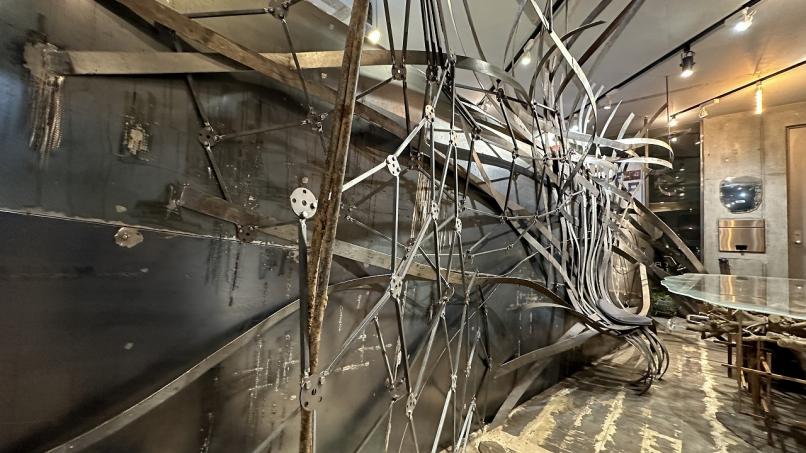
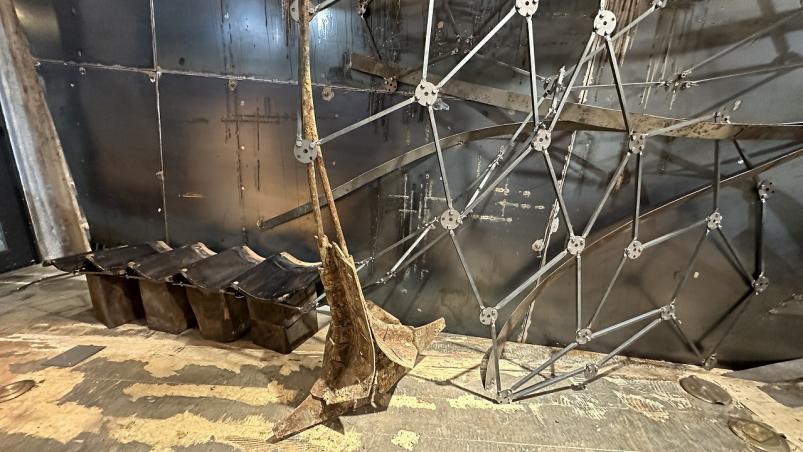
We are currently renovating the SOTOCHIKU showroom in Omotesando. (The photo above was taken last November.) We will be exhibiting items that utilize the “broken things” detailed this time in a new space. Last time, we announced that we would hold a “special exhibition” in March, but we would like to hold it according to the following schedule.
Location: 2-20-4 Nishiazabu, Minato-ku, Tokyo, 1F SOTOCHIKU Showroom @GRIDFRAME
Date and time: April 11th (Fri) 17:00-20:00,
April 12th (Sat) 13:00-20:00,
April 13th (Sun) 13:00-20:00
We look forward to brewing your coffee and enjoying it.
<The 4th Paint Miracle @ Kyonan Pakuchi Bank>
Saturday, April 26th, 10:30-16:00 Please come along!
Please let us know in advance that you will be participating. For more information, please visit the Facebook page below.
https://www.facebook.com/events/1166573968595269
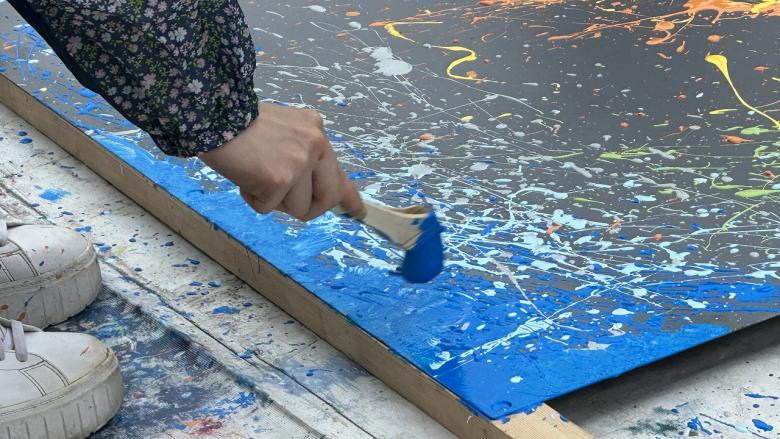
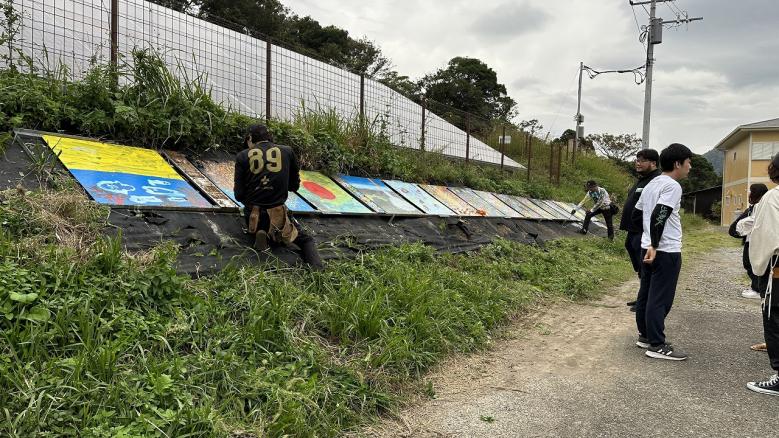
In the next issue, we would like to tell you about SOTOCHIKU’s various activities.
February 28, 2025 GRIDFRAME Toshiro Tanaka


Comments are closed